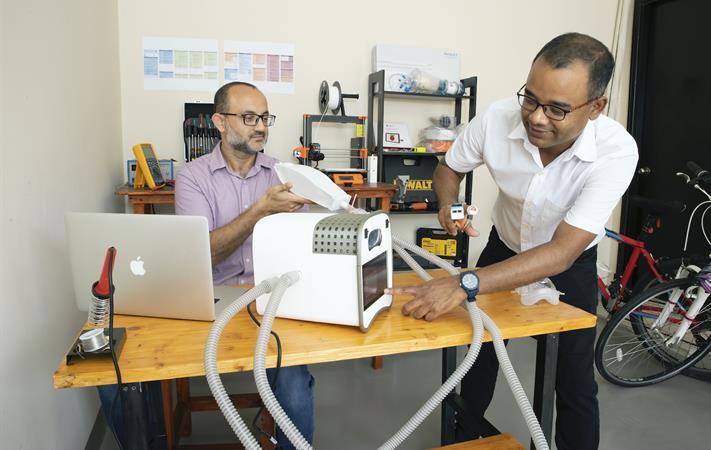It’s an unfortunate fact that people with severe respiratory illnesses are often confined to hospitals, where they must breathe through ventilators. A new portable device that harvests oxygen from the air, however, may someday allow them to stay at home.
Typically, the air supplied by medical ventilators has a higher oxygen content than the atmospheric air which we normally breathe. That oxygen-rich air is supplied either by a central system within a hospital, or by compressed air tanks.
Additionally, the percentage of oxygen in the air is typically adjusted as a patient’s condition changes. This means that the patient has to remain in a hospital, where their condition can be constantly monitored and their oxygen levels can be tweaked accordingly. Additionally, even if a portable ventilator that utilizes pure oxygen tanks were to be used in a patient’s home, there would still be the logistical matter of having to frequently refill or replace those tanks.
That’s where the Ventibag ventilation system is intended to come in.
The prototype setup was designed by Dr. Adnan Qamar and Ahad Syed, both of whom are researchers at Saudi Arabia’s King Abdullah University of Science and Technology (KAUST). It was a winner of the university’s KAUST COVID-19 Innovation Challenge, in which staff members were invited to develop technologies for dealing with the pandemic.

KAUST
Building on technology already utilized by airliners, Ventibag uses a porous mineral known as zeolite to absorb nitrogen from pressurized atmospheric air. That nitrogen is then flushed out of the system, resulting in a compressed gas that is up to 96-percent oxygen.
The system additionally utilizes artificial-intelligence-based algorithms to analyze data provided by sensors worn on the patient’s body. If it’s determined that their basal respiratory rate is either too high or too low, the percentage of oxygen in the air supplied by the setup is automatically adjusted as needed. Physicians are also able to manually adjust those levels and other settings, via a touchscreen interface.
“We conceived this device to address a critical need in the pandemic challenge, which is the shortage of medical beds and overcrowding of hospitals,” says Qamar. “We asked, ‘Why should patients suffering from COVID-19 or lung diseases be in a crowded facility at all?’ We envisioned a portable device that could provide quality care, but from the convenience of a patient’s home.”
The scientists are now refining the technology, in hopes that it may someday be available for general use.
Source: KAUST
Source of Article